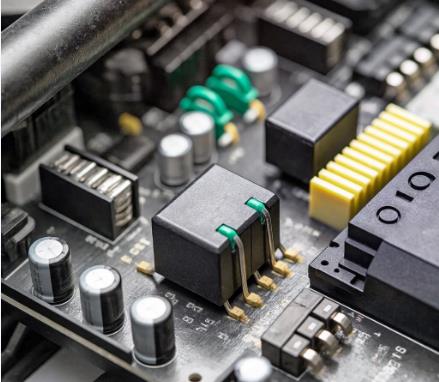From ECU to BMS: Full Application Scenarios of Thick Film Resistors in Automotive Electronic Systems
2025-05-26
Thick film resistors have become key components in automotive electronic systems due to their high power density, high temperature resistance, and resistance to pulse impact. Under the trend of electrification and intelligence, its application scenarios have extended from traditional ECU control units to high-voltage battery management systems (BMS). This article focuses on two core scenarios: CAN bus terminal matching and BMS current detection. Combining vehicle certification with real cases, it analyzes the selection strategy of thick film resistors and the original factory solutions.
1、 ECU control unit: strict requirements for CAN bus terminal matching resistors
As the backbone network of vehicle communication, the terminal resistance of CAN bus needs to ensure signal integrity and suppress reflections. The typical design requirements are as follows:
1. Technical requirement analysis
● Resistance accuracy: 120 Ω± 1% (ISO 11898 standard);
● Vehicle regulation certification: AEC-Q200 Grade 1 (-40 ° C~+125 ° C);
● Vibration resistance: Mechanical vibration ≥ 20g (frequency 10Hz~2kHz);
● Long term stability: Resistance drift<± 2% after 1000 hours of high temperature and high humidity (85 ° C/85% RH).
2. Comparison of original factory solutions
Brand/Model
|
key parameter
|
authentication
|
Application Cases
|
Cost positioning
|
Vishay CRCW-HP
|
120Ω+1%,TCR+100ppm/'C,0.25W
|
AEC-Q200 Grade 1
|
High end ECU terminal matching module for a certain German car
|
Mid to high end ($0.15 per question)
|
Guoju RC-LT series
|
120Ω+2%,TCR+200ppm/'C.0.2W
|
AEC-Q200 Grade 0
|
Domestic new energy vehicle CAN bus system
|
Mid end ($0.08/piece)
|
KOA RK73H-ET
|
120Q+1%,TCR+100ppm/℃,抗硫化设计
|
AEC-Q200 Grade 1
|
Japanese hybrid vehicle gateway control unit
|
High end ($0.18/piece)
|
Case analysis: A German car company's ECU module uses Vishay CRCW-HP series resistors. The measured resistance deviation is less than ± 0.8% in an environment of -40 ° C~125 ° C, and the 10-year road test failure rate is 0, meeting the ASIL-B functional safety level.
2、 Battery Management System: High Voltage Challenge of Current Detection Resistance
BMS needs to monitor the charging and discharging current of the battery pack in real time, and the accuracy and reliability of detecting resistance are directly related to the safety of the high-voltage system.
1. Technical requirement analysis
● Voltage withstand level: working voltage ≥ 1000V, pulse withstand voltage>10kV (ISO 6469-3);
Low resistance and high precision: 0.5m Ω± 1%, TCR ≤± 50ppm/℃;
● Anti pulse impact: able to withstand 100kA short-circuit current (lasting for 10ms);
● Heat dissipation design: thermal resistance<50 ° C/W to avoid resistance drift caused by temperature rise.
2. Comparison of original factory solutions
Brand/Model
|
key parameter
|
authentication
|
Application Cases
|
Cost positioning
|
Isabellenhütte BVs
|
0.5m Ω±0.5%, TCR+35ppm/℃, with pulse 15kV
|
AEC-Q200 Grade 0
|
Tesla 4680 battery module current detection
|
High end ($5.2 per piece)
|
Vishay WSHP3920
|
1mΩ±1%, TCR+50ppm/'C, Thermal resistance of 30-C/W
|
AEC-Q200 Grade 1
|
BYD blade battery BMS module
|
Mid to high end ($3.8 per piece)
|
Fenghua High tech FH-HPC series
|
2m Ω± 2%, TCR+100ppm/C, Attached pulse 10kV
|
AEC-Q200 Grade 1
|
High Voltage Distribution Unit
|
High end ($0.18/piece)
|
Case analysis: The Tesla 4680 battery module uses Isabellenh ü tte BVS resistor array to achieve ± 0.3% current detection accuracy at a system voltage of 1000V, withstand a cell temperature of 150 ° C, and pass 10kV pulse testing.
3、 Selection criteria and future trends
1. Core principles for selection
● Vehicle regulation certification: ECU scenarios require Grade 1 (-40 ° C~+125 ° C), BMS prioritizes Grade 0 (-55 ° C~+150 ° C);
● Cost performance balance: Vishay/Isabelenh ü tte is preferred for high-end models, while Fenghua High tech can be chosen for economy models;
● Heat dissipation design: BMS detection resistors need to be paired with copper substrates for heat dissipation, reducing thermal resistance by more than 50%.
2. Technological Trends
● Integrated detection module: resistor+temperature sensor+signal conditioning IC three in one package (such as TI INA700);
● New material breakthrough: Metal based thick film resistors (such as AlSiC) have increased their voltage resistance to 2000V;
● Intelligent compensation: The resistor array with built-in MCU can calibrate temperature drift in real time (accuracy improved to ± 0.1%).


